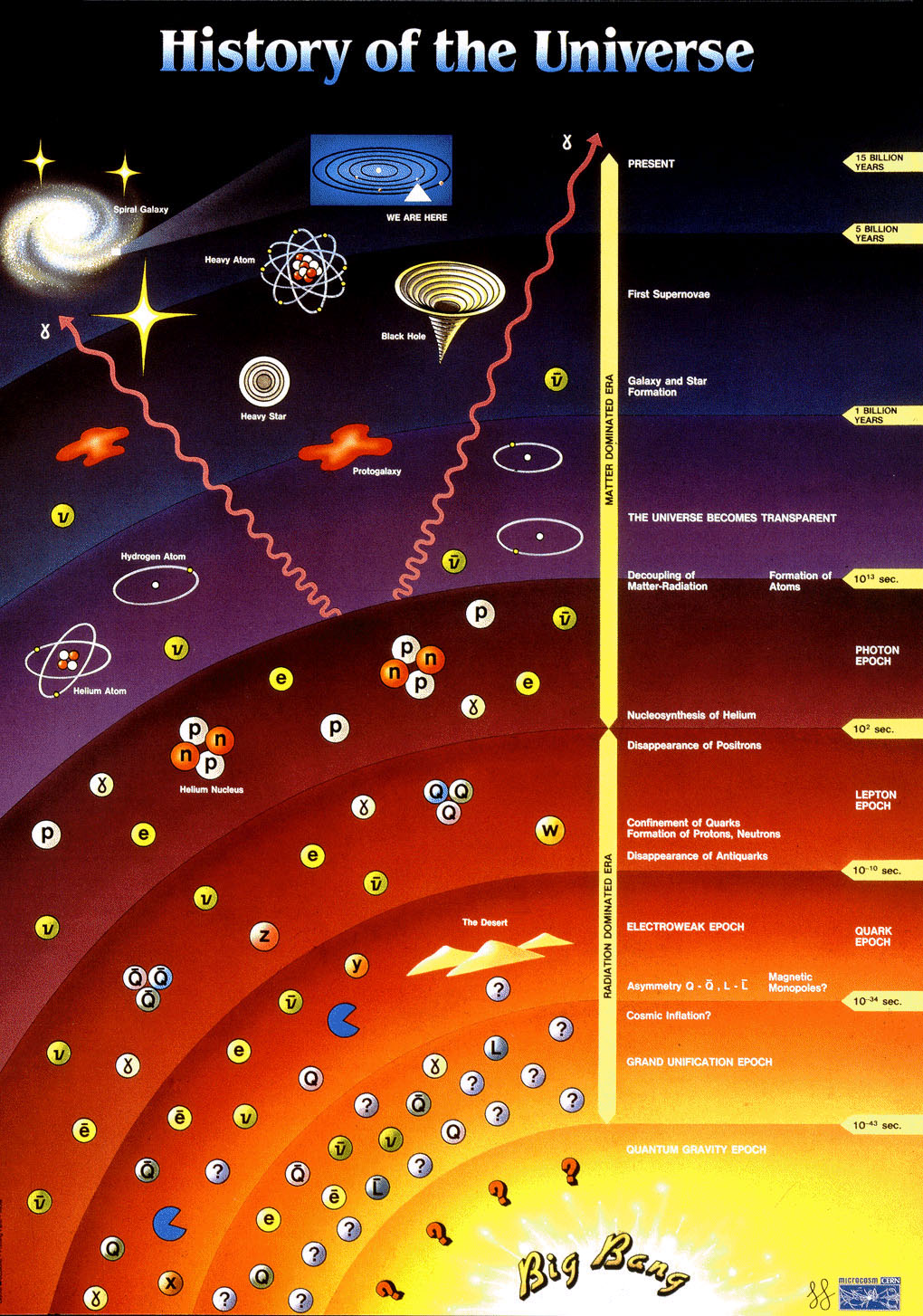Wonder - A Scientific Oratorio
Theme 2 - The creation of the light elements
In the first few minutes after the Big Bang the lightest elements - hydrogen and helium - are created in a seething cauldron of matter and energy.
Soon after the Big Bang conditions in the Universe were extreme - there was a seething maelstrom of matter and energy constantly interchanging (as suggested by Einstein with his famous equation E = mc2 , expressing the equivalence of mass and energy).
During the first fractions of a second the building blocks of matter are created. After a few minutes the nuclei of the simplest chemical elements are formed: hydrogen and helium.
The Universe continues to expand but it is relatively smooth, there is no structure. After 50,000 years or so mysterious dark matter clumps begin to collapse. These are the structures that eventually lead to the birth of stars and galaxies, and ultimately, ourselves.
At this time the Universe is like a fog, light cannot travel far before it is scattered or absorbed. However at about 380,000 years after the Big Bang, temperatures have dropped to the point where free protons and electrons can come together to make hydrogen atoms - recombination. The Universe becomes transparent and light is free to travel relatively unimpeded.




